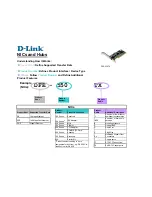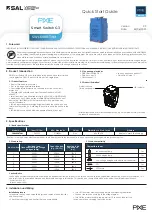
282
MLD
MVR
N
NAS
NetBIOS
NFS
NTP
O
OAM
MLD is an acronym for Multicast Listener Discovery for IPv6. MLD is used by IPv6
routers to discover multicast listeners on a directly attached link, much as IGMP is
used in IPv4. The protocol is embedded in ICMPv6 instead of using a separate
protocol.
Multicast VLAN Registration (MVR) is a protocol for Layer 2 (IP)-networks that
enables multicast-traffic from a source VLAN to be shared with subscriber-VLANs.
The main reason for using MVR is to save bandwidth by preventing duplicate
multicast streams being sent in the core network, instead the stream(s) are received
on the MVR-VLAN and forwarded to the VLANs where hosts have requested it/them
(Wikipedia).
NAS is an acronym for Network Access Server. The NAS is meant to act as a gateway
to guard access to a protected source. A client connects to the NAS, and the NAS
connects to another resource asking whether the client's supplied credentials are
valid. Based on the answer, the NAS then allows or disallows access to the protected
resource. An example of a NAS implementation is IEEE 802.1X.
NetBIOS is an acronym for Network Basic Input/Output System. It is a program that
allows applications on separate computers to communicate within a Local Area
Network (LAN), and it is not supported on a Wide Area Network (WAN).
The NetBIOS gives each computer in the network both a NetBIOS name and an IP
address corresponding to a different host name. It provides the session and
transport services described in the Open Systems Interconnection (OSI) model.
NFS is an acronym for Network File System. It allows hosts to mount partitions on a
remote system and use them as though they are local file systems.
NFS allows the system administrator to store resources in a central location on the
network, providing authorized users continuous access to them. This means NFS
supports sharing of files, printers, and other resources as persistent storage over a
computer network.
NTP is an acronym for Network Time Protocol, a network protocol for synchronizing
the clocks of computer systems. NTP uses UDP (datagrams) as transport layer.
OAM is an acronym for Operation Administration and Maintenance.
It is a protocol described in ITU-T Y.1731 used to implement carrier Ethernet
functionality. MEP functionality like CC and RDI is based on this.







































